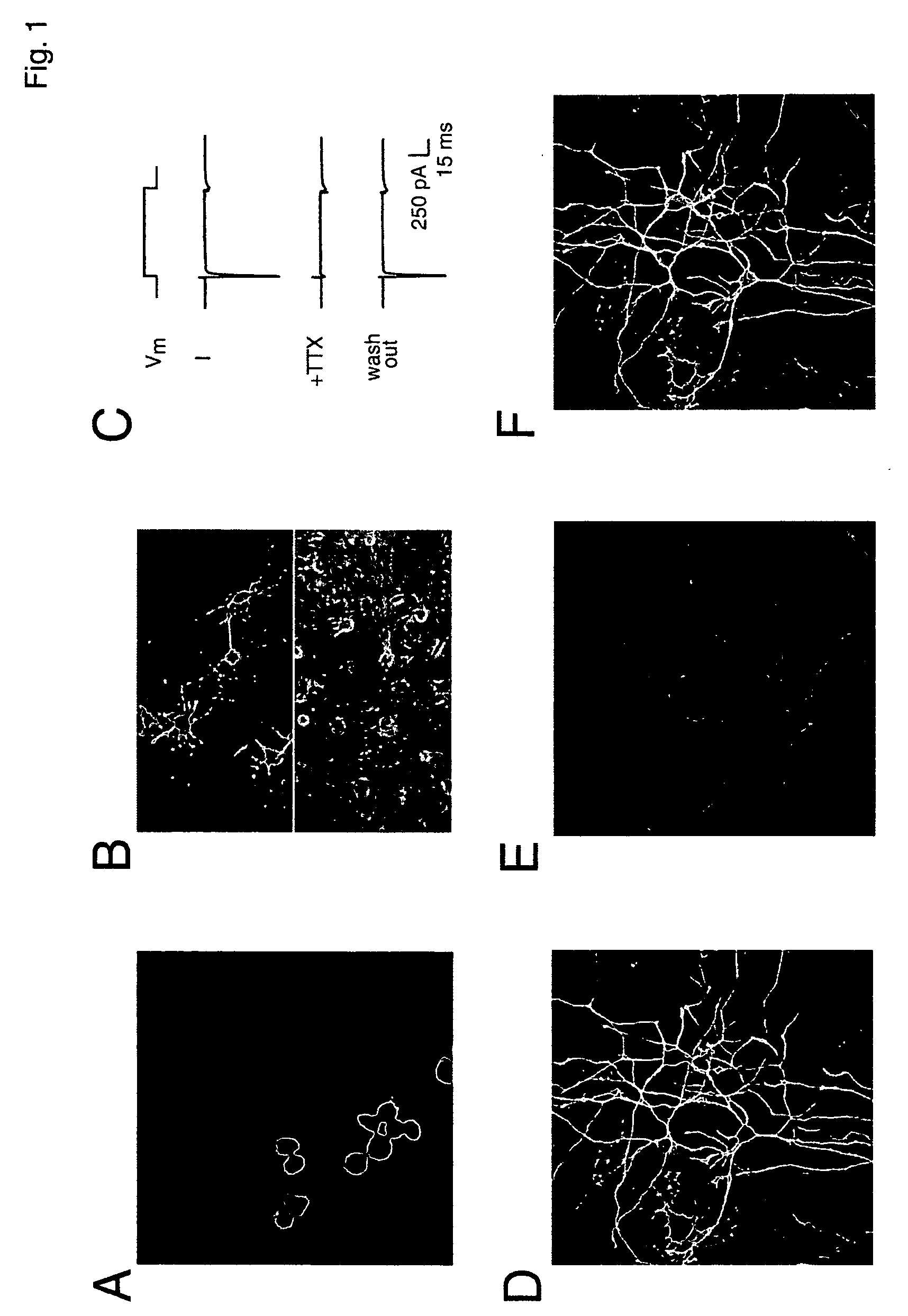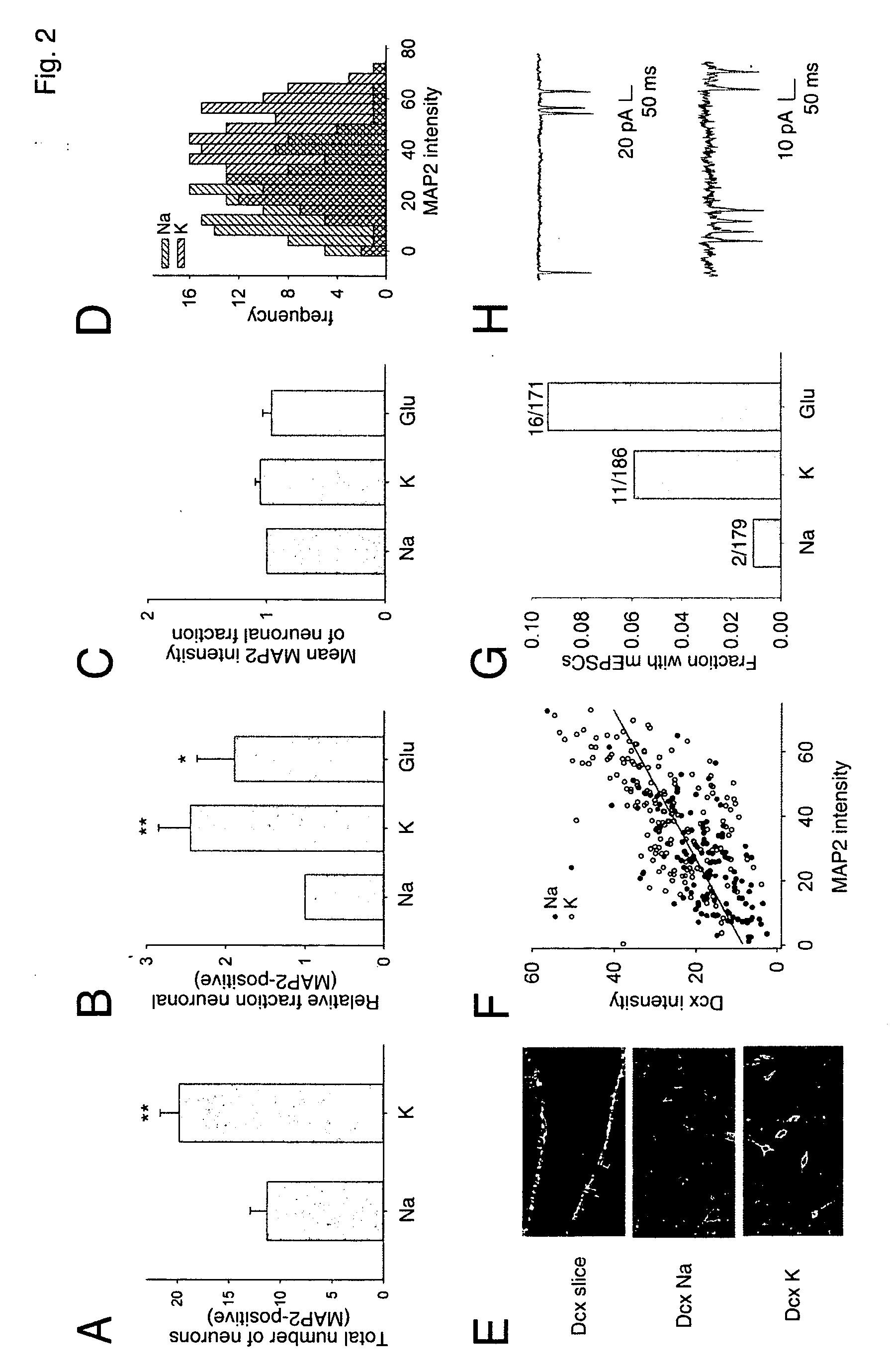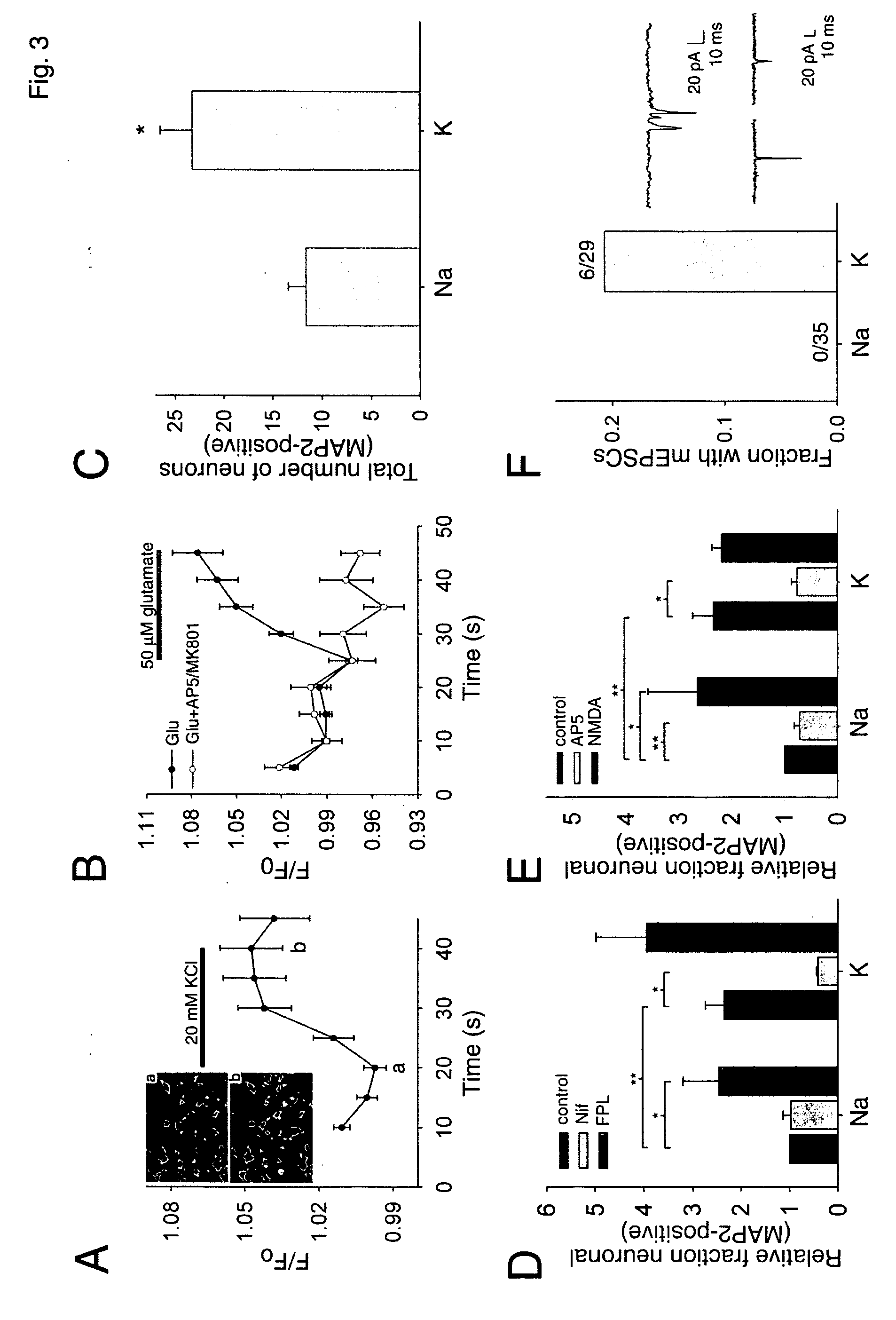Coupling of excitation and neurogenesis in neural stem/progenitor cells
a neural stem/progenitor cell and excitation technology, applied in the field of coupling excitation and neurogenesis in neural stem/progenitor cells, can solve the problems of neurogenesis-dependent functions, learning and memory, and decrease in synaptic plasticity, and achieve the effect of increasing neuronal cells and promoting neurogenesis
- Summary
- Abstract
- Description
- Claims
- Application Information
AI Technical Summary
Benefits of technology
Problems solved by technology
Method used
Image
Examples
example 1
[0093] In vitro system for studying the relationship of excitation to neurogenesis. Although in vivo approaches are clearly important, it is difficult to precisely control and measure activity levels in vivo in a rigorous fashion. Furthermore, it is difficult in vivo to determine which cell type(s) directly sense any changes in activity, much less elucidate the detailed molecular mechanisms responsible. Therefore, to directly determine the neurogenic effects of activity on proliferating post-natal NPCs (excitation-neurogenesis coupling), it was necessary to begin with a reduced in vitro system to provide uniform proliferative conditions, defined excitation and differentiation stimuli, and full physiological characterization of the resulting differentiated cells.
[0094] To examine stem / progenitor cell behavior in the presence of mature neurons and glia, green fluorescent protein (GFP)-labeled adult rat hippocampal NPCs (Palmer et al. (1997) Mol Cell Neurosci 8, 389-404) were used. To...
PUM
| Property | Measurement | Unit |
|---|---|---|
| volume | aaaaa | aaaaa |
| volume | aaaaa | aaaaa |
| osmolarity | aaaaa | aaaaa |
Abstract
Description
Claims
Application Information
 Login to View More
Login to View More - R&D
- Intellectual Property
- Life Sciences
- Materials
- Tech Scout
- Unparalleled Data Quality
- Higher Quality Content
- 60% Fewer Hallucinations
Browse by: Latest US Patents, China's latest patents, Technical Efficacy Thesaurus, Application Domain, Technology Topic, Popular Technical Reports.
© 2025 PatSnap. All rights reserved.Legal|Privacy policy|Modern Slavery Act Transparency Statement|Sitemap|About US| Contact US: help@patsnap.com



